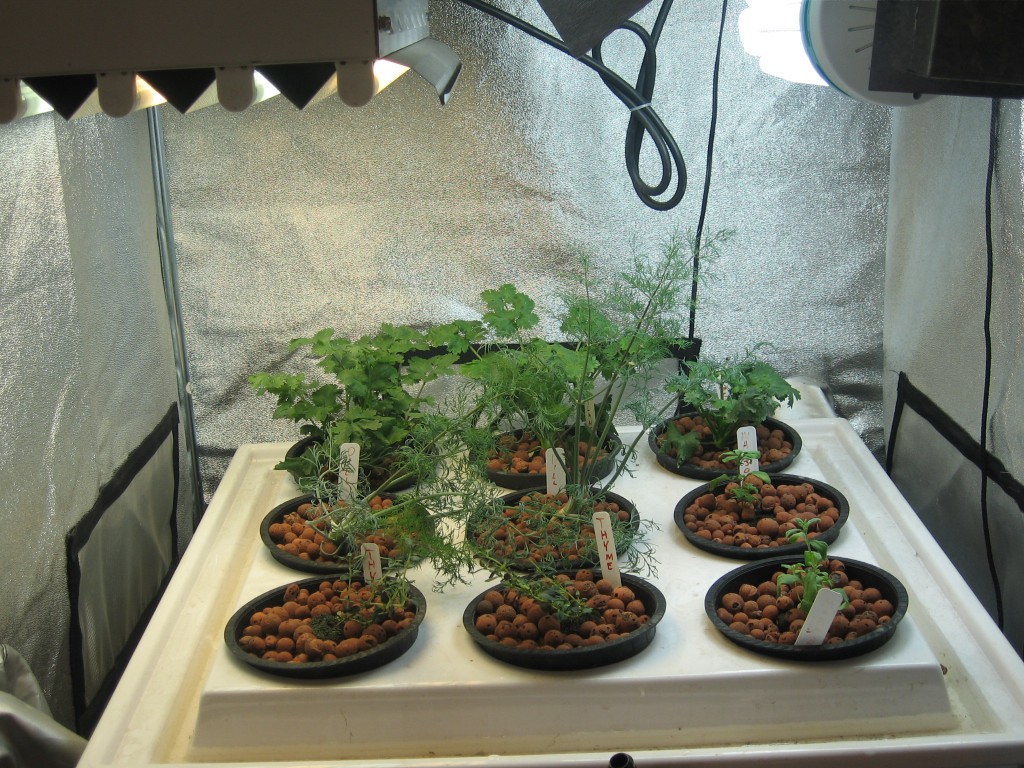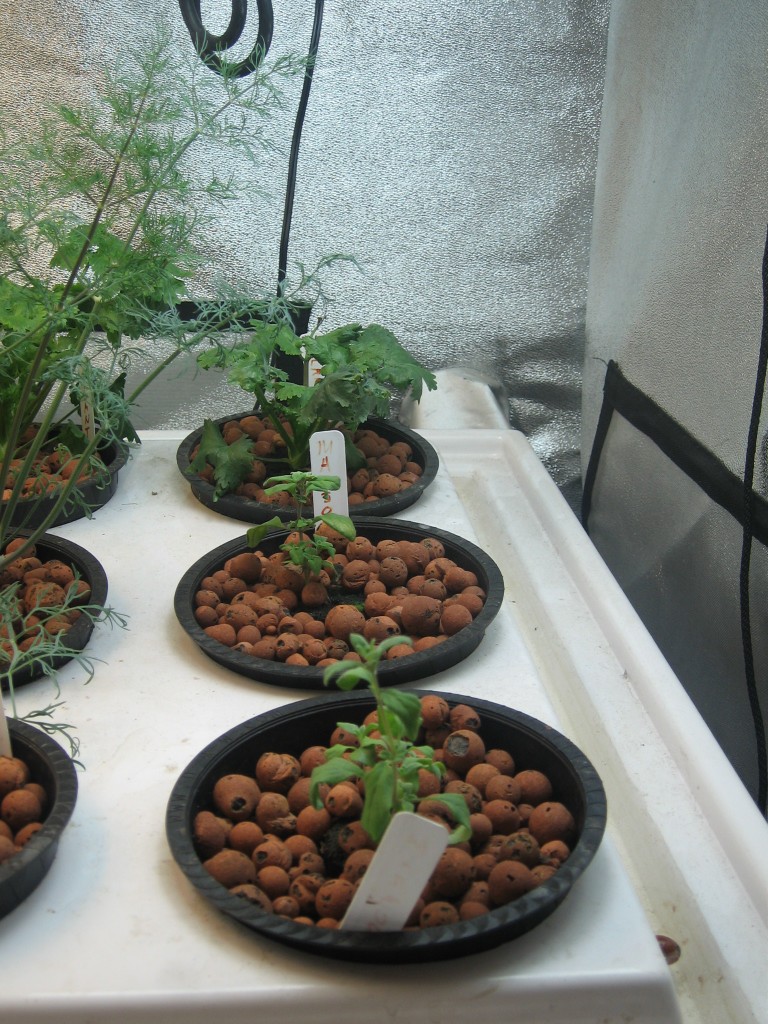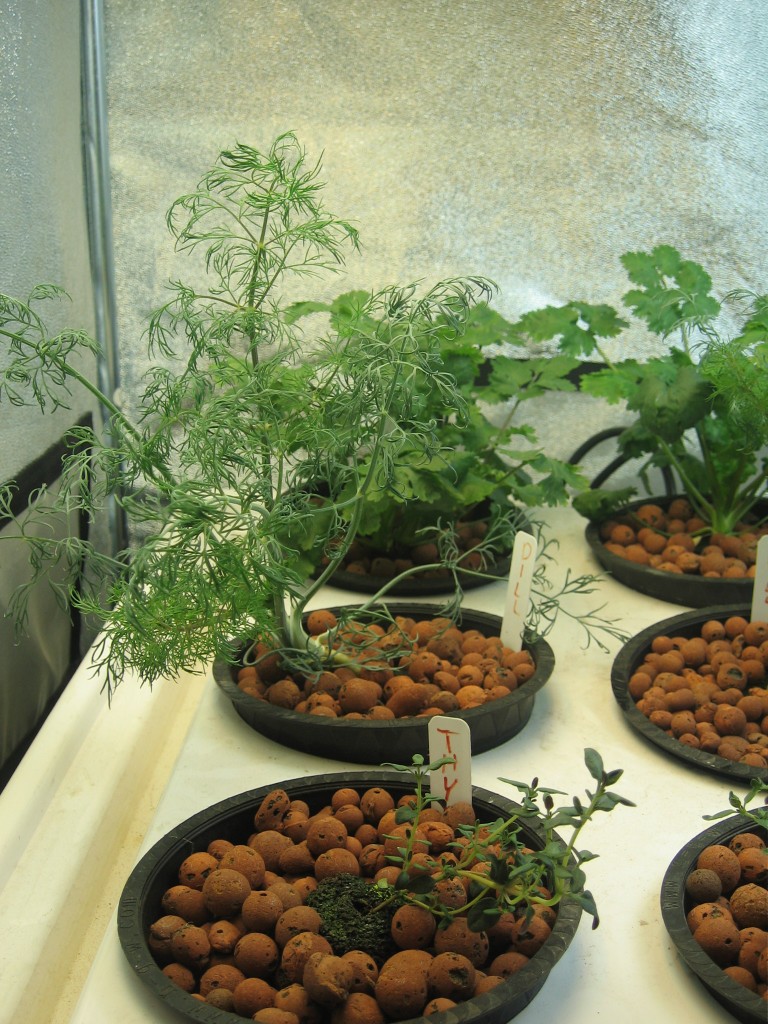Several weeks ago we began an experiment at the Fifth Season Asheville store incorporating several different herbs into a deep water culture system. We’re happy to report that we succeeded in not killing anything. In fact, the herb variety (cilantro, dill, marjoram, and thyme) are thriving in the environment.

During week one, the infant herbs were moved to the DWC and given the Canna nutrient line with a PPM of 250 (see the first installment of our culinary herb experiment for a precise definition of PPM). The herbs responded immediately to the Canna.
One week later, the plants doubled in size! Since the herbs were doing so well, we decided to move the PPM regiment up to 400 PPM. This time we added 50 ml of Aqua Vega A and 50 ml of Aqua Vega B. We slowed our dosage down on the seaweed-based Canna Rhizotonic (per Canna’s nutrient table requirements for their Aqua Line) to 40 ml.
The only glitch so far was a little burn on one of the cilantro plants. We determined that the light was the issue and moved up the Feliz 125 watt blue spectrum six inches and the problem was solved. The singe could also be associated with nutrient burn, but since none of the other cilantro showed burn marks (and they were under a different T5 lighting system), the Feliz light became the prime suspect.
We introduced Cannazym (90 ml) into the reservoir for the first time. This special enzyme breaks down dead root matter, which turns roots into sugars, which the plants will gobble up immediately due to its high energy content. The sugars also serves as food for any beneficial microorganisms in the grow media. Furthermore, the elimination of dead root matter wipes out breeding grounds for pathogenic organisms.
A week later, the herbs had tripled in size.
Since the herbs continued to grow at an exponential rate, we once again upped the Canna dosage for a 500 PPM requirement. We added 80 ml of Aqua Vega A and B each, 40 ml of Rhizotonic, and finally 90 ml of Cannazym.


On a sad note: One employee with an extra particular palette cut some of the herbs and applied it to a pasta dish. Afterwards, we were forced to restrain the employee with chains in order to keep him from cutting the herbs down and applying it to all his food. Presently, he is bound up in the back, far away from the DWC.
Stay tuned for another update in a couple of weeks…

Leave a Reply